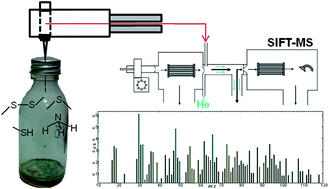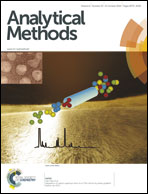Quantification by SIFT-MS of volatile compounds emitted by Aspergillus fumigatus cultures and in co-culture with Pseudomonas aeruginosa, Staphylococcus aureus and Streptococcus pneumoniae
Abstract
Following our recent in vitro study of the volatile compounds emitted into the gas phase by the respiratory pathogens Pseudomonas aeruginosa (PA), and most recently Staphylococcus aureus (SA), Streptococcus pneumoniae (SP) and Haemophilus influenzae (HI), we have extended this work to the investigation of the volatile compounds emitted by in vitro cultures of the common respiratory fungus Aspergillus fumigatus (AF). The measurements were achieved using selected ion flow tube mass spectrometry (SIFT-MS) by which real time analyses of trace volatile compounds can be achieved without disturbing the cultures. It is seen that copious amounts of ammonia and the organosulphur compounds methanethiol, dimethyl sulphide and dimethyl disulphide are produced by AF cultures. These may be sufficient to allow for non-invasive detection of the AF in the airways of infected patients by breath analysis. AF also efficiently absorbs and metabolises the aldehydes acetaldehyde, butanal and pentanal from the supportive medium (brain-heart infusion broth). Preliminary studies of the volatile compounds emitted by co-cultures of AF with PA, SA and SP revealed that the biomarker HCN (for PA) is not compromised by the presence of AF, and the organosulphur compounds (for AF) are not compromised by the presence of SA or SP.


 Please wait while we load your content...
Please wait while we load your content...